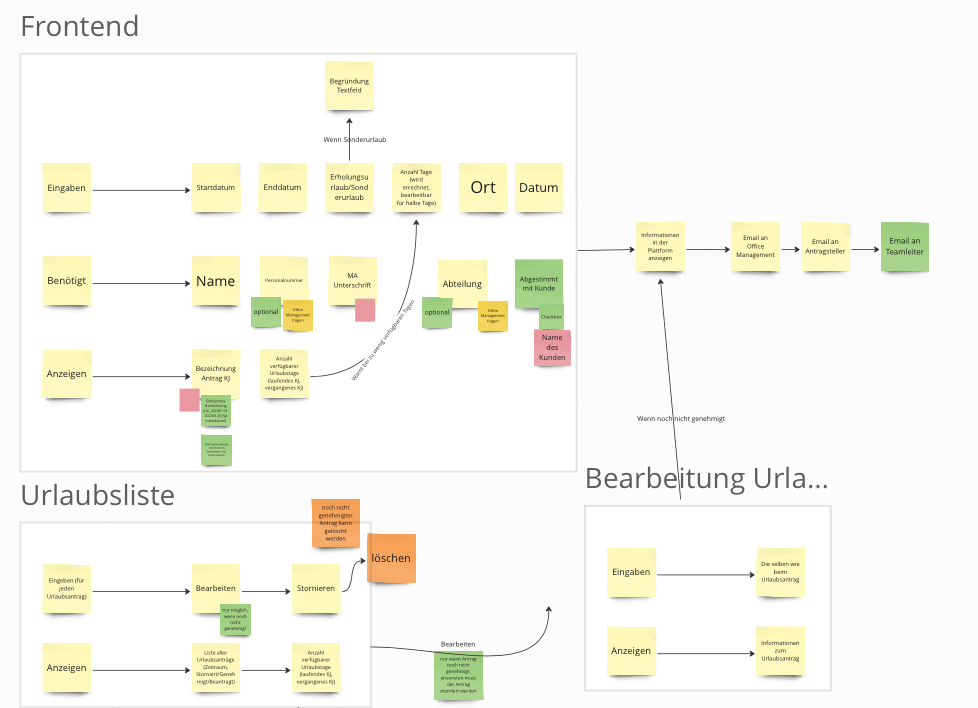
Make Your Professional Service Firm Grow (Part I)
Growth strategies in professional service firms

Oliver Grasl
Friday, February 7, 2014
A description of dynamics that govern growth in professional service firms and a presentation of a little game to challenge your thinking
Growth Strategies in Professional Service Firms
When speaking to entrepreneurs and executives I often hear that “business is tough” and “being a businessman is hard” and I think most people take this to mean that market conditions are bad and therefore there is too little business around.
But actually business can also be really tough when the market is booming and you are trying to make your company grow—in fact, as I will demonstrate, if you grow your company and are not careful you may end up with higher revenue but less money in the bank than you would have made if you had kept the company at the size it was in the beginning (i.e. by not growing at all).
To be specific, I will use ourPrototyping Business Models And Market Strategies to investigate growth strategies in professional service firms (such as management consultants, IT consultants and creative agencies). Making professional service firms (PSFs) grow is particularly hard for the following reasons:
- You are not only competing for customers but also for human resources, i.e. the professionals you need to deliver your service. When market conditions are good for selling services, they are often bad for hiring professionals, because all your competitors are also trying to recruit fresh talent. This is why professional service firms are much less scalable than firms that create consumer goods or firms that provide online services.
- When you bring new professionals on board, it takes a while for them to learn about how you go about your business. Not only are they not productive themselves, but they also bring down the productivity of the experienced professionals who are showing them the ropes.
- You need these professionals both to acquire new business (e.g. for service development effort and pre-sales bidding effort that is not billable) and also to deliver the associated service. If you do not do this well, you can easily end up with an oscillating business where you first have too much business, but too few professional resources, then you have too little business and too many resources, and so on.
Please note that the first of these points is about market conditions (which you cannot really influence) while the other two points are about conditions within your company (which you definitely can influence). As we will see, even if market conditions are perfect you can still make better or worse decisions about how to use these conditions to your advantage.

Investigating these growth strategies in detail is going to be too much for one blog – therefore my objective for this post is to sketch the key dynamics that govern growth in professional service firms; I will then use this sketch as a basis for detailed investigation in the Make Your PSF Grow.
Let me start with how the professional service firm (PSF) makes money. To keep our discussion simple I assume the PSF delivers its service in the form of projects. The projects are billed regularly (e.g. weekly). The revenue is then calculated as the project delivery rate (measured in staff weeks per week) times the weekly project delivery fee (which I assume is identical for each staff member). The project delivery rate itself will depend on how many staff members are working on projects, the volume of the projects (measured in staff weeks) and the duration of the projects (measured in calendar weeks). These factors determine the PSFs revenue, I have illustrated them in the causal loop diagram below.

After a delay the revenue is collected and arrives in the PSFs bank account, increasing its stock of cash. Of course, the cash balance also has a negative influence, viz. the costs, which are determined by the cost of the professional staff (salaries, workplace costs) and fixed costs (such as marketing costs, administrative overhead …). I have added these connections to the diagram below.

What does the company do with the remaining cash?
Well, the company wants to grow and the only way to achieve significant growth is by hiring new staff; the amount of cash available to the PSF will determine the hiring rate. Any new staff coming onboard will create cost—I have illustrated this balancing loop in the diagram below.

So far, we have investigated how the company will create revenue by delivering projects. Clearly, the rate at which the staff can deliver projects does not only depend on the number of staff available, but also on the number of current projects. The faster the projects are delivered, the faster the current number of projects goes down—if no new projects come in, the PSF will go out of business. I have added the negative feedback from the project delivery rate to the projects below.

But where do new projects come from?
Well, obviously the professional service staff cannot just spend its time delivering projects, it also needs to spend some of its time acquiring new projects. The number of business development staff will determine the rate at which new business is developed, along with the effort to find prospective customers and with the prospecting success. The result of business development efforts is proposals, some of which are successful, some of which are not. Experience also shows that there is mostly a significant delay between generating a lead, writing a proposal and the time the new assignment starts. It is important to note that although these factors can be influenced by the company (after all, that is what marketing is all about), they are mainly determined by the market you are operating in.
The actual ratio of business development time to project delivery time will depend on the staffing policy—some PSFs have teams dedicated to developing business, each team member spending all its time developing business and none delivering projects. In other companies, some of the staff both develop business and deliver projects, sharing their time between the two tasks. I will investigate the implications of these strategies in a future post, for now, it is sufficient to add these facts to the sketch.

The sketch is looking good now, it captures the main feedback loops that govern growth in a professional service firm. But as I noted at the beginning of this post, growth may have a negative effect on the productivity of the professional service team. I have added these negative feedbacks to the diagram below.

This completes my investigation for today—it did not take long to create the sketch, but nevertheless, it captures some of the important feedback loops that determine the performance of a professional service firm. I will use the completed sketch below as a basis for investigating resource allocation policies in Make Your PSF Grow.

Until then, I have a little challenge for you: We have created a small game that captures the dynamics just discussed above—see whether you can make the PSF grow by making the right hiring decisions and allocating professional service staff wisely. The challenge is to end up with more cash in the bank than you would end up with if you keep the company at its original size. It is not as easy as it sounds!
Here are the assumptions underlying the game:
- The average project volume is 16 person-months
- The average project duration is 2 months, i.e. 8 project delivery staff are involved for 2 months
- The prospecting effort to generate a lead and write a proposal is 4 months
- The project acquisition duration is 6 months, i.e. it takes 6 months between generating the initial lead before a newly acquired project starts
- Market conditions are perfect, i.e. both the prospecting and acquisition success rates are at 100%
- The project delivery fee is EUR 17,600 per person-month, i.e. the daily rate per consultant is EUR 880
- Projects are charged on a monthly basis
- The collection duration is 2 months, i.e. it takes 2 months after revenue is collected and arrives in the bank
- The workplace cost per staff member is EUR 1000 per month (rent, laptop, software licenses and services…)
- The company has an overhead cost of EUR 306.000 per month (administrative cost…)
- The average salary per staff member is EUR 100,000 per year
- The hiring duration for new staff is 3 months
- The initial cash is at EUR 1,000,000
- The company initially has 200 professional staff members, 20% of which are assigned to business development. In this setting, the company is stable
- The initial backlog of project weeks is 320 person-months, and the initial number of prospective projects/proposals in the sales pipeline is also 320 person-months
Table of Contents
Services
Resources
All Rights Reserved.



